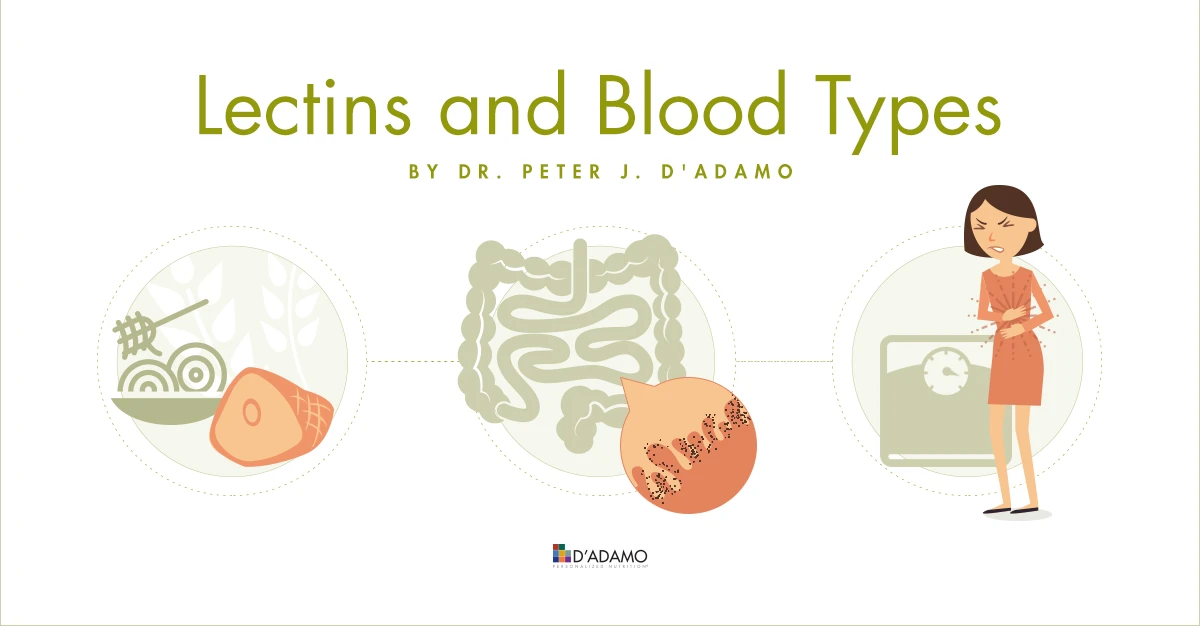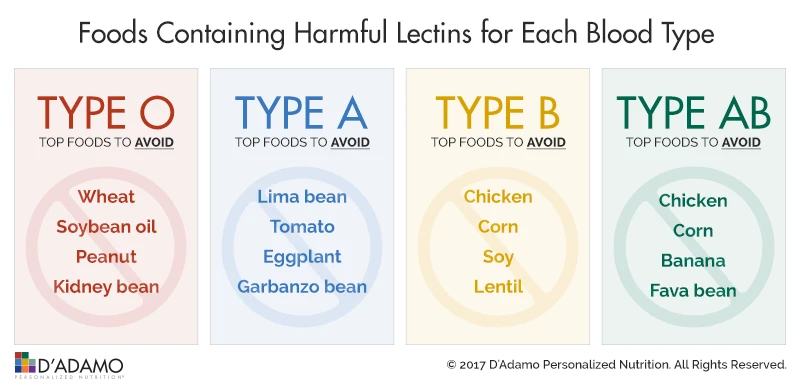
Understanding the way lectins work is paramount to understanding the positive impact The Blood Type Diet can have on you. But before exploring how lectins behave within your body, you have to understand what a lectin actually is.
In the simplest of terms, a lectin is a type of protein that acts as a selective Velcro-like material. They come in two main forms, single and double-sided. The single sided lectins only stick to other things. Cells in the liver have this type of lectin on their surfaces to snatch up harmful bacteria and parasites that may be present. Two sided lectins stick two other cells together, like a piece of double-sided tape between objects. Both varieties, despite their differences, have many commonalities.
Although both the single and double sided kinds both cause agglutination (the clumping of particles), they do so in specific, individualized ways. Each lectin has a certain type of material it is meant to bind to and this changes depending on what species the reaction is occurring inside as well as the blood type of the person or animal involved. The source of the lectin itself also has a great bearing on how it will react. For example, the lectin found in wheat is different from the one found in soy, both in its appearance and how it interacts with different sugars. Understanding the source of the lectin and the chemistry of the person consuming it is at the center of eating right for your blood type.
Some foods have lectins that react specifically to particular blood types. One of the best examples of this phenomenon is wheat germ agglutinin, or WGA. Though gluten is the poster child for wheat’s harmful effects on the human body, WGAs are another toxic, negative component found in wheat-based products. Though gluten isn’t a lectin like a WGA they both can cause similar issues in the body such as a leaky gut. WGAs go a step further than gluten though, causing insulin resistance and Vitamin D deficiency as well. While it has been consistently proven harmful to animals when administered in large doses, for human beings it disproportionately affects Type O Blood Types. Knowing about harmful lectins like WGA is vital for general health, but when looking at how they interact with each Blood Type specifically, it makes the knowledge all the more important.
The impact that WGAs can have on the effectiveness of insulin within the body is just one example of how lectins can have broad, sweeping effects throughout multiple bodily systems at once. While ingested food will of course affect the digestive system, most people assume incorrectly that the impact ends there. There are several examples of lectins impacting all different parts of the body. Cranberry juice, because it contains the same sugar found in the bladder walls, is commonly used as a home remedy for bladder infections. The lectins present act as tape, attaching to the harmful materials in the bladder and forcing them out. Other lectins can interact with the surface receptors of white blood cells, often programming them to multiply rapidly. Even joints can be affected, as people who have arthritis find that avoiding “nightshade vegetables” such as tomatoes and white potatoes helps alleviate the pain. This conclusion isn’t hard to rationalize, as these food types are very high in lectins that agglutinate aggressively, thus aggravating the already inflamed areas in the joints suffering from arthritis.
Dr. Peter D’Adamo has been an advocate of understanding lectins since Eat Right 4 Your Type debuted in 1996. He has continued to stress the importance of lectins on one’s diet, and it seems that the rest of the world is finally starting to come around to that fact as well. Ignoring your blood type and how it interacts with the lectins found in the food you consume is a recipe for disaster. While this article is a great summary of how lectins work, it only scratches the surface of the depth behind their function. For the most complete, detailed information about lectins from Dr. D’Adamo, read the detailed entry on lectins in the Eat Right 4 Your Type Complete Blood Type Encyclopedia from pages 343-350.


